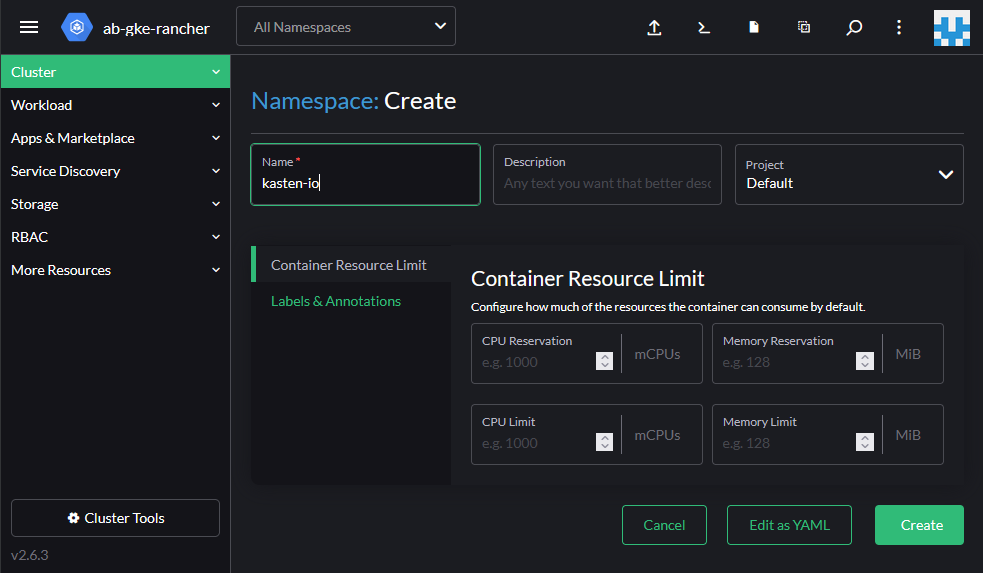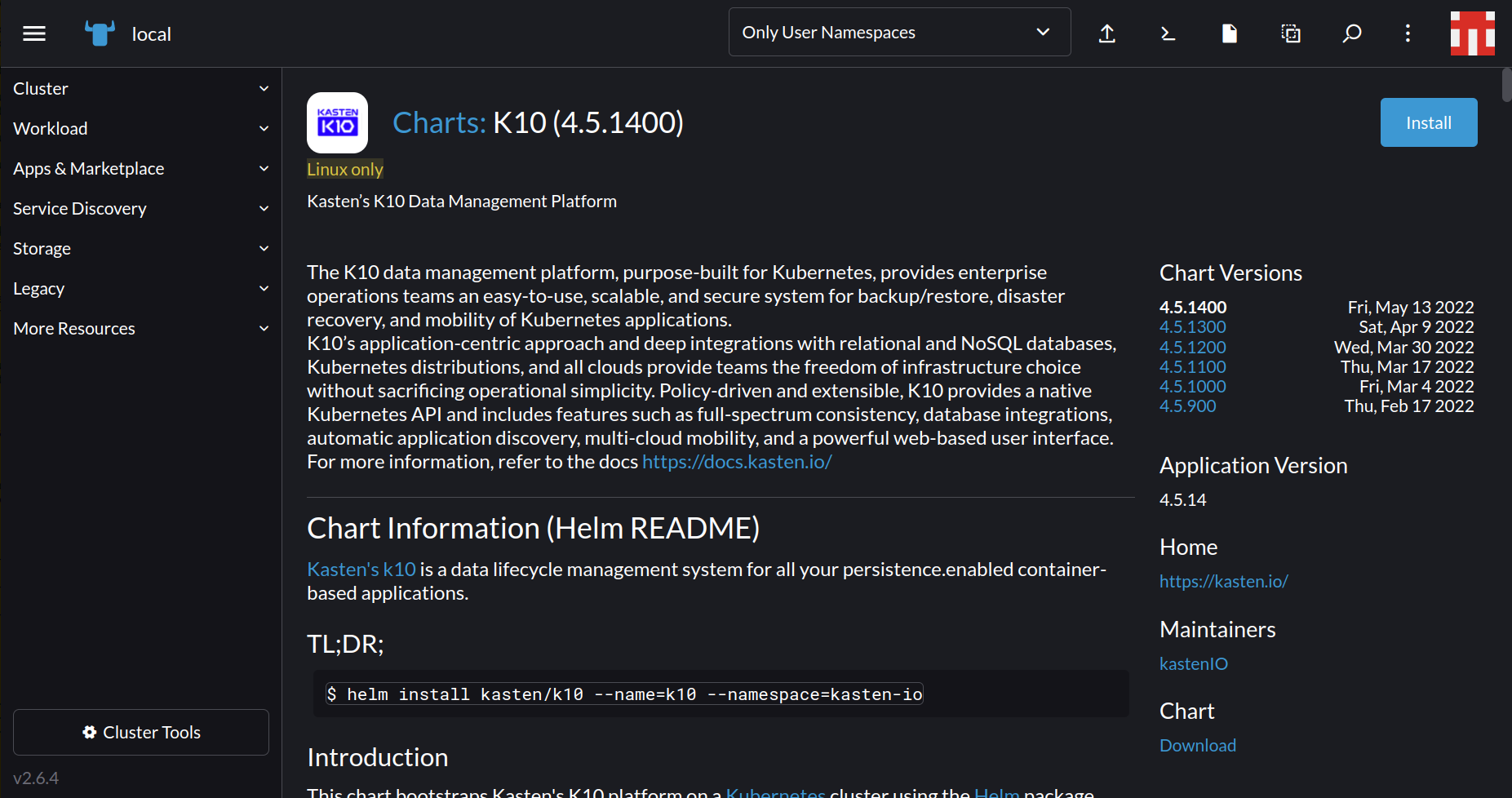Note
With the 7.0 release in May 2024, "Kasten by Veeam" and "Kasten K10" have been replaced with "Veeam Kasten for Kubernetes." Throughout this documentation, references to "K10" will be modified to include both the new and simpler "Veeam Kasten" names. Both names will be used for a while, and then the documentation will be modified only to use the new names. The name K10 is still used for functional examples.
SUSE Rancher Apps & Marketplace Based Installation
Prerequisites
Before installing Veeam Kasten on a SUSE Rancher managed Kubernetes cluster, please ensure that the install prerequisites are met.
Prior to deploying Veeam Kasten, it is recommended that you need to create the namespace where Kasten will be installed. By default, the documentation uses kasten-io.
In the SUSE Rancher user interface, navigate to Clusters -> Project/Namespaces and click "Create Namespace" and create a namespace called ‘kasten-io’.

Veeam Kasten Installation
1. Find the Veeam Kasten chart of the SUSE Rancher Marketplace. Navigate to Apps & Marketplace -> Charts and search for ‘Kasten’.

To begin the installation, simply click
Install.

3. Select the namespace 'kasten-io' from the Namespace dropdown menu. Optionally select "Customize Helm options before install" to customize the deployment. See this page for detailed descriptions of available options.

To complete installation, click
Next.
Note
When deploying Veeam Kasten on a SUSE Rancher managed Kubernetes cluster using Cilium as a Container Network Interface (CNI), it is important to consider the associated limitations, including potential compatibility issues or differences in configuration compared to the default CNIs. Refer to this Knowledge Base page for instructions on addressing these issues and optimizing the deployment with Cilium.